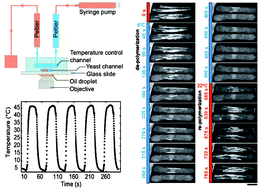Fast microfluidic temperature control for high resolution live cell imaging†
Abstract
One major advantage of using genetically tractable model organisms such as the fission yeast Schizosaccharomyces pombe is the ability to construct temperature-sensitive mutations in a gene. The resulting gene product or


 Please wait while we load your content...
Please wait while we load your content...